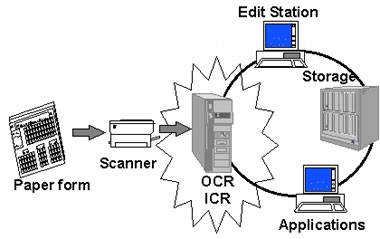Intelligent Character Recognition (ICR) is an advanced version of OCR that allows font and different styles of handwriting to be learned during processing to improve accuracy in recognition levels.
Most of the good ICR software have a self-learning kind of system referred to as a neural network, which automatically updates the recognition database for new handwriting patterns.
It basically extends the usefulness of scanning devices for the purpose of document processing, from printed character recognition (a function of OCR) to hand-written matter recognition.
Because this process is involved in recognizing handwriting, accuracy levels may, in some circumstances, not be very good but can achieve 97%+ accuracy rates in reading handwriting in structured forms.
Often to achieve these high recognition rates several read engines are used within the software and each is given elective voting rights to determine the true reading of characters.
In numeric fields engines which are designed to read numbers take preference while in alpha fields engines designed to read handwritten letters have higher elective rights. When used in conjunction with a bespoke interface hub, handwritten data can be automatically populated into a back office system avoiding laborious manual keying and can be more accurate than traditional human data

An important development of ICR was the invention of Automated Forms Processing in 1993. This involved a three-stage process of capturing the image of the form to be processed by ICR and preparing it to enable the ICR engine to give best results, then capturing the information using the ICR engine and finally processing the results to automatically validate the output from the ICR engine.
This application of ICR increased the usefulness of the technology and made it applicable for use with real-world forms in normal business applications.
